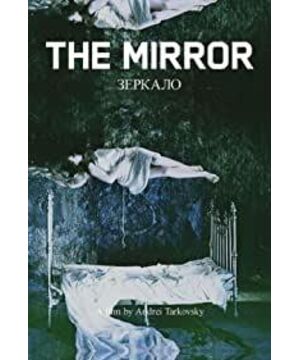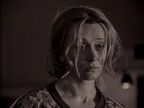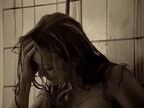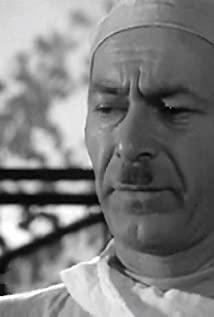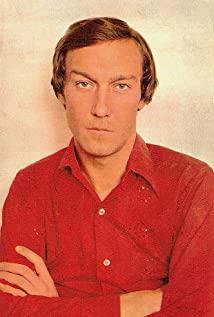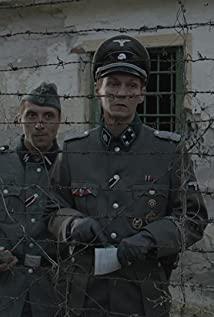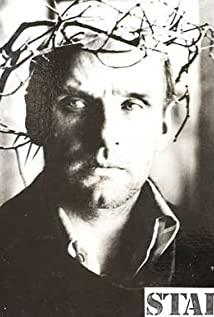The purpose of writing this short essay is just to make more sleeping audiences awake to enjoy the dream of the old tower. In addition, as Laota himself said that his movies have no threshold, as long as you use intuition to feel, discard rationality, and maximize the subconsciousness, everyone can understand.
In addition, I recommend a small essay on commercial film methodology , because the author will pick out some types of films for comparison from time to time.
Dreams and poetry can be said to be the two key words of Laota's films. Then, take "Mirror" as an example to talk about how Tarkovsky makes full use of film language to remove (drop) narrative and construct a poetic dreamland full of senses.
temporality of film
The plot most accessible to the human brain should be linear. That is, the next scene follows the previous scene. A more typical recent example is Clint Eastwood's The Mule. The big structure of the movie is the chapter back body, and each chapter is the old man's trip to transport drugs, Cheng. The story in each drug delivery is also linear. Even the play ends with a classic conflict resolution ending. However, this narrative method that is too pleasing to the general public can sometimes fail to satisfy those who seek excitement. So Hollywood doesn't always end up being linear. Quentin's famous "Pulp Fiction" is an attempt at the chaotic collision of different story timelines. Most of Christopher Nolan's films play narrative games. But these narratives are nothing more than a way of constructing suspenseful conflict, and the goal is to make our mental extremities feel pleasant when they are slightly stimulated.
Yet even the linearity of time itself dissolves in Tarkovsky's films. If you extract a scene from the movie, you cannot accurately define the time relationship between it and the two scenes before and after, as if it is a special non-derivable discontinuous function. After all, deep learning has nothing to do with non-convex (concave) functions. This is especially evident in The Mirror, where each scene is a functional discontinuity, an isolated artwork. The movie starts off amazing.
The first scene in the mirror is a little boy looking at the TV [00:09]. The audition of this scene alone is special enough. Generally speaking, when Hollywood movies introduce new characters or the main scenes of the story, the camera lens will be from far to near, so as to better give the audience enough background information and give people a feeling that a good show is about to be staged. Here the old tower gives a scene with the same minimalist feeling as Dreyer's "The Passion of Joan of Arc"
For a first-time viewer, no one else interacts with the teenager, so his identity is unknown and he represents no one. Room details are unknown, only one window can be seen, so it could be any room. It looks like there's only something special about this TV that emits white noise. But it makes no sense. Back to the topic, due to the serious lack of background information in this scene, the time from the narrative point of view is naturally unclear. You don't know what the teenager has done and what to do. Strictly speaking, from a narrative point of view, no matter what the next scene is, it will have nothing to do with the temporal linearity of this scene. What does the old tower give us in the next shot?
The second scene depicts a teenager who is cured of stuttering under the guidance of a doctor under hypnosis [00:30]. It is also a minimalist sound and picture, an isolated plot with unknown meaning. But when you juxtapose the two pictures I cut, you will find the subtle relationship between the two plots. The teenager in the first act looks at the TV, and the teenager in the second act looks directly at the camera, which is generally avoided in the classic film language, symbolizing looking directly at the audience (remember how to break the fourth wall in "Deadpool"? performance), by extension. It also implies that the boy in the second act is watching the boy in the first scene outside the TV (in addition, the cut in the voice also implies this), and he is also looking at us outside the big screen. The white noise of the TV and the stuttering of the teenagers are excellent echoes. Taking these two scenes as the beginning, combined with the autobiographical nature of the film, it is not difficult to see that what Tarkovsky wants to express is very simple, that is, "Although it is very difficult, I want to tell you some of my own stories."
There's no narrative, no character building, so you can't count on the Hollywood way of saying it. Contrast it again, how pale my language is, and how intelligent and rich Tarkovsky's images are, fully displaying the expressive power that is unique to the film. His films do not need time constraints, nor time as a container to advance the plot. The connection between the shot and the scene is full of artistic creativity, forcing the audience to open their senses to fully associate. This is essentially the same as contemporary art. The audience relies on the medium of the work to communicate with the author, empathize with the author, and achieve spiritual pleasure. Therefore, Laota has always refused to comment on his own works, and stamped a conclusion on the content inside. He warmly welcomes movie lovers like me to watch, feel and interpret his movies.
spatiality of film
TODO.. (mainly about the movement of the camera)
Transitions and Editing
Following on from the topic above. Because the plot of Hollywood movies has a strong timeliness, it is like the current that pushes the plot forward, which will make people pay attention to the progress of the plot, and it is easier to ignore the connection points between the scenes. But the author who goes to the plot of Laota and forces the audience to think about it is different. The transitions between scenes are bound to be abrupt and attract attention. At first, empty scenes with unclear meaning and subconsciously moved always appear between the two scenes.
The first scene after the official start of the film is the burning house, interspersed as a transition as the sleeping little Tarkov driver [16:35], and then a black and white description of the empty shot of the strong wind blowing through the bushes [16.47] , and finally the black-and-white little Tarkovsky woke up from his dream. This is followed by the surreal description of the mother in the first paragraph of the film, which also includes the half-naked body of the father. This important empty scene has an inexplicable sense of oppression and unease. As mentioned in the previous narration, my father always appeared from behind that bush. And the wind here is like the soul of my father, passing through the tree and returning to the wooden house. [17:40] A falling shirt cuts my perspective, and then the naked body of my father fills the camera, which is the most poetic sexual suggestion. This group of shots corresponds to almost these few sentences. The mother always stared at the woods stupidly, hoping that the father would appear, but only the silent wind and other strange men appeared. He longed for his father, but his father left like a ghost, and she was left with hysteria, his soul decaying as quickly as his body.
Immediately followed by the second empty shot, from the black and white mother's wrinkled hands suddenly (note that the hands stroked in the mirror are exactly), and then turn to a pair of soft and warm hands in color. The warm hands are connected to the flowered curtains [20:01] that shine through the sun, and the lens returns to the warmth again. Like waking up from a nightmare. from the conversation
Another example is the empty shot at the end of the story at the printing house, where the mother hides her face and weeps in the bathroom. From the fierce dialogue with colleagues before this scene, we can understand that the reason for crying is related to the departure of his father. Corresponding to my previous chat on the phone, in 1935 my father passed away, the same year as the burning house. Therefore, in this empty scene, the burning house just represents the departure of my father. (This is also because the old tower film does not have a narrative, and relies on its own collage of the stories in the scene). What's next is my current wife looking in the mirror. Continuing the previous picture, the wife looked at herself in the mirror again, as if she was watching her mother looking at the burning house on the field. In the conversation, I seemed impatient and irresponsible.
With the burning house with its rich meaning, I have an ingenious binary mapping with my father, my mother and my wife. So far, the film has not expressed the pain of my mother after my father left, and the hardships of raising me alone during the war. There is no direct description of my injury to my wife, but the tone of the film has been constructed by the opening scenes.
Imagery and Poetry
Generally speaking, the understanding and interpretation of imagery is the most important for poetry. The same goes for the Old Tower movie. The most important image in The Mirror is the mirror, but it is obvious that the mirror in the film not only has a single meaning, but also has multiple meanings.
Use of natural elements
View more about Mirror reviews


